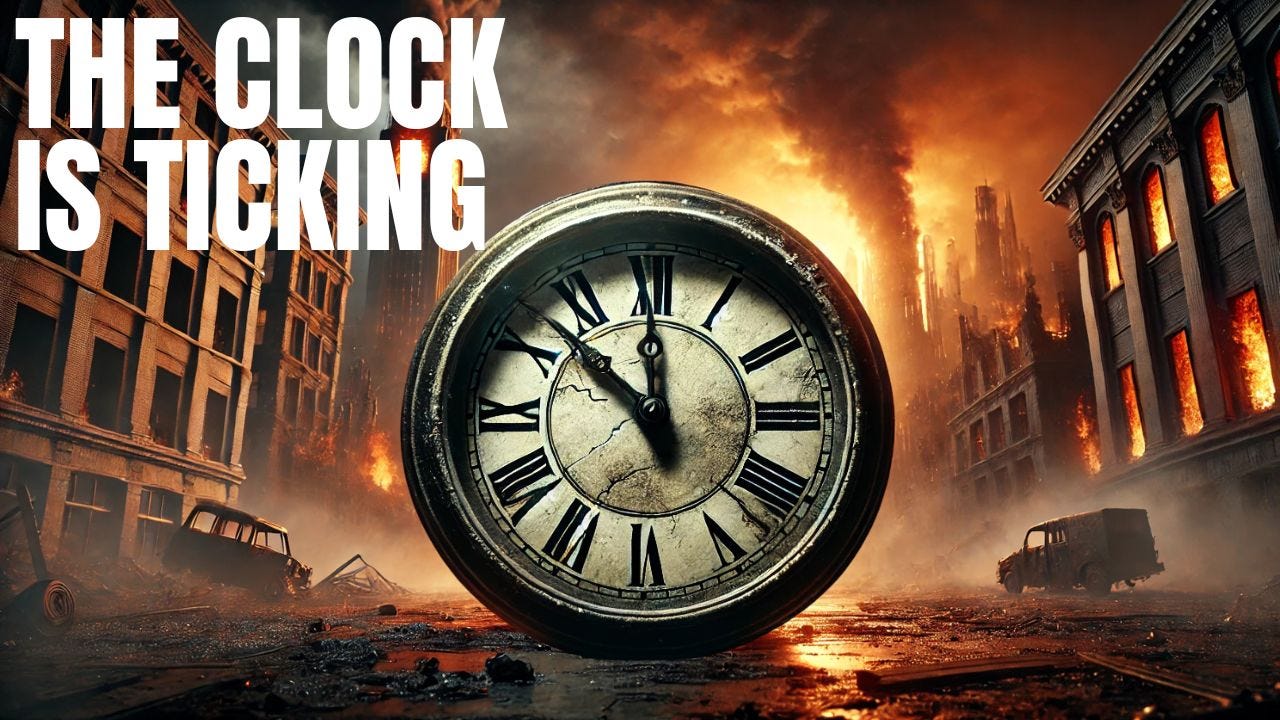Demolition's Doomsday Clock
The demolition and construction industry does not have a Doomsday Clock. But, if it did, that clock would be very close to midnight.
In 1947, a group of scientists - including Albert Einstein and Robert Oppenheimer and others who had worked on the Manhattan Project - founded the Bulletin of the Atomic Scientists.
Haunted by the destructive force they had unleashed on the world, they sought a way to warn humanity. They needed a symbol that could communicate urgency, fragility, and danger without a single word.
They created the Doomsday Clock.
The hands on this symbolic clock could be shifted back or forward depending on how close humanity stood to catastrophe; whether from nuclear weapons, climate change, or, more recently, artificial intelligence. Midnight meant destruction. Midnight meant the end.
Over the years, the hands have moved back and forth, but never by much. Humanity, it seems, is always flirting with disaster.
Today, that clock stands at just 89 seconds to midnight - the closest it has ever been. Nuclear threats sharpened by the war in Ukraine, rising global instability, conflict in Gaza, a worsening climate crisis, a US president that treats allies as enemies and enemies as allies, and the unstoppable march of technology have all conspired to keep us teetering on the edge.
The clock is no longer a metaphor for a distant possibility. It is a reflection of our very precarious present.
Now, the UK demolition and construction industry does not have a Doomsday Clock. But perhaps it should. For if such a clock existed, its hands would not rest calmly at twenty or thirty minutes from midnight. No. This industry - long plagued by crises both slow and sudden; longstanding and relatively recent - would find its own symbolic clock drawing ever closer to catastrophe. Each unresolved problem, each mounting challenge, each missed opportunity for change ticks the hands forward.
So let us set this imaginary clock and trace the minutes as they slip away.
The time says 11:40. Twenty minutes to midnight.
At first glance, the dangers seem distant. The industry’s public image remains poor. The industry is viewed as dirty, dangerous, male-dominated, and unwelcoming. Diversity and inclusion efforts are tokenistic at best. Leadership is leaden and often absent; managers promoted for possessing academic qualifications rather than vision or genuine leadership ability. Innovation, though available, is resisted; too costly or too frightening to embrace. Waste disposal grows more complex, landfill taxes mount, and fuel costs spike with the loss of the red diesel levy.
There is an over-reliance on a few dominant Tier 1 contractors, with subcontractors carrying disproportionate risk under skewed and unfair contracts. This leads to ever-narrowing margins across the supply chain, discouraging investment in training and innovation. The sector begins to stagnate.
These are slow-burn issues. They may not kill the industry tomorrow, but like rust on steel, they weaken its structure from within. And so, the clock ticks forward.
It is 11:45 - Fifteen minutes to midnight.
The threats begin to sharpen. Demand itself wavers. Commercial real estate falters in the wake of hybrid working; office blocks stand empty and projects stall. Housing markets are uncertain, their boom-and-bust cycles leaving construction in limbo. Government infrastructure promises flicker on and off like faulty light bulbs, each policy U-turn undermining confidence.
Onerous and overlapping regulations add bureaucracy; weak enforcement enabling rogue contractors to undercut responsible ones. Planning bottlenecks clog project pipelines, and a lack of long-term strategy for infrastructure investment stalls progress.
Technology, meanwhile, races ahead. Robotics, drones, artificial intelligence. All promise efficiency. But many firms, especially smaller ones, cannot keep pace. Meanwhile, as the world becomes more connected, cybersecurity threats intensify.
Brexit’s shadow still looms large: labour shortages, import costs, and a widening gap between UK and EU standards all take their toll. And from further afield, geopolitical unrest sends tremors through the supply chain. Steel, cement, energy; all hostage to wars and instability half a world away.
The clock ticks again. It is 11:50. Ten minutes to midnight.
Now the threats can no longer be brushed aside as challenges. They are systemic failures.
Material costs soar. Energy, fuel and insurance follow suit. Projects are delayed, budgets shredded, and profit margins ground to dust. Payments trickle down ever more slowly; main contractors clinging to cash while subcontractors suffocate. Regulation overload compounds the pain, with rule after rule adding complexity without clarity; bureaucratic burden without profit.
And then there is the environmental backlash. Demolition becomes a dirty word, and even deconstruction is viewed with suspicion. Refurbishment and refit becomes the new flavour of the month.
Net Zero mandates loom, forcing companies to abandon diesel-powered machinery without a clear or affordable alternative. Transition is demanded, but guidance and support are scarce.
An increase in the frequency of climate-related risks like flooding result in even greater public scrutiny of construction’s carbon footprint and disruption.
The industry wobbles. The hands move closer still. It is 11:55. Just five minutes to midnight.
Here now, at the brink, the threats converge.
Company insolvencies mount, great and small collapsing under the weight of thin margins and broken business models. Skills shortages bite deeper; the workforce grows older while the young remain uninterested, deterred by the industry’s battered reputation. Apprenticeships are too few, training too shallow, and a generation of knowledge slips quietly into retirement.
The race to the bottom intensifies. Tenders are won on price alone, corners are cut, quality sacrificed. Firms cling to life until the inevitable collapse.
And amid it all, a human crisis festers. Mental health problems sweep across the workforce, with construction recording some of the highest suicide rates in the country. Behind every statistic lies a family left devastated, colleagues left bewildered, an industry left diminished.
Trust disintegrates. Between client and contractor, between main contractor and subcontractor, between worker and employer. Fragmentation becomes fracture, fracture becomes collapse.
And the hands of our imaginary clock tremble as they move even closer to midnight.
The Bulletin of the Atomic Scientists set their clock as a warning to the world, a chance to act before it is too late.
The demolition and construction industry has no such clock, no single dial to remind us of how close we stand to disaster. But if it did, we would see the truth: that time is not on our side, and that without change, the stroke of midnight is much closer than we dare admit.



